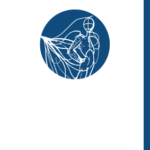Abstract
Osteoporosis is an illness that affects the skeleton and is characterized by progressive loss of bone mass as well as
by micro architectural deterioration of bone tissue of the same. This condition exposes the person to fracture risk, a
particularly feared event not only in terms of individual health but even in terms of economic burden. The fractures,
in fact, are accompanied by autonomy loss, institutionalization risk, comorbidity and mortality. On an economic level,
the reduction of the same absorbs many more resources than anti-osteoporosis drug therapies even in the event that
all patients are reached with ascertained osteoporosis and with 100% adherence to medication. In the elderly, in addition to incurring in loss of bone density risk there is an increase of fall risk. Both of these factors add up causing an
increase of fracture risk. Due to the demographic increase and life expectancy, osteoporosis and fracturing events will
tend to increase, causing an increase in costs. Today, the data collected in Italy regarding osteoporosis prevalence
and fragility fractures incidences are not entirely exhaustive. Concerning fractures, data is reliably collected using
the “Diagnosis Related Group Classification” and refers to those of the femur.
Detect and describe the pathway that the patient with primary osteoporosis follows in the Marche Region.
Through the regional Single Booking Center (CUP) and the websites of the Italian League of Osteoporosis (LIOS)
and the Italian Society of Osteoporosis, Mineral Metabolism and Skeleton Diseases (SIOMMMS), eleven services
have been identified, belonging to the four health care companies of the Marche Region (Asur, Inrca-Irccs, AO Ospedali Riuniti Marche Nord, AOU Ospedali Riuniti Ancona), which can be contacted for an osteoporosis checkup. A
questionnaire was therefore prepared based on the recommendations contained in the SIOMMMS (2012), SIMFER
and SIGN (2015) guidelines and sent to the above-mentioned services. The questionnaires are seven, duly completed
and used for processing data.
In the Marche Region, the medical specialties that deal with osteoporosis are various, demonstrating the fact that this
is a “border illness”. Concerning the interception of the patient, his sending to a specialized service, the diagnostic
approach and the use of risk-scoring tools, there is a substantial homogeneity throughout the regional territory. The
patient is sent to the specialized center by the general practitioner (GP) or other specialist, based on the presence of
risk factors for osteoporosis alone or on the basis of their presence in association with BMD measurement (body mass
density measurement) already known. For the purposes of diagnosis, the investigations required are the dual-energy
x-ray absorptiometry (DXA) and the blood test while the use of risk-scoring tools are mainly dictated by the need to
define the threshold of pharmacological intervention and give the patient perception of its own fracture risk. The most
used algorithm is DeFRA. During the evaluation of the patient, all services detect pain and fall risk.
The approach to osteoporosis and fall risk is purely pharmacological. From a non-pharmacological point of view,
attention is paid in informing the patient about the modifiable risk factors for osteoporosis and falls. Only some services carry out interventions aimed at promoting adherence to treatment, resorting to different actions. In conclusion,
the main critical issues relating to taking care of a fracture risk patient are: accessibility to information, early and
exhaustive interception of the population at risk, detection of the fracture risk in relation to bone demineralization
and fall risk, adherence to therapy

This work is licensed under a Creative Commons Attribution 4.0 International License.
Copyright (c) 2020 David Letizia, Ceravolo Maria Gabriella, Mengoni Alessandro





